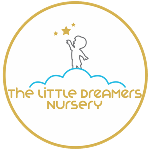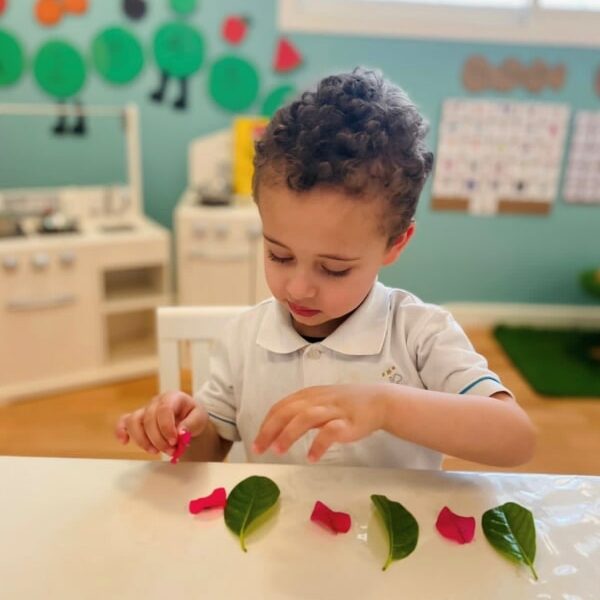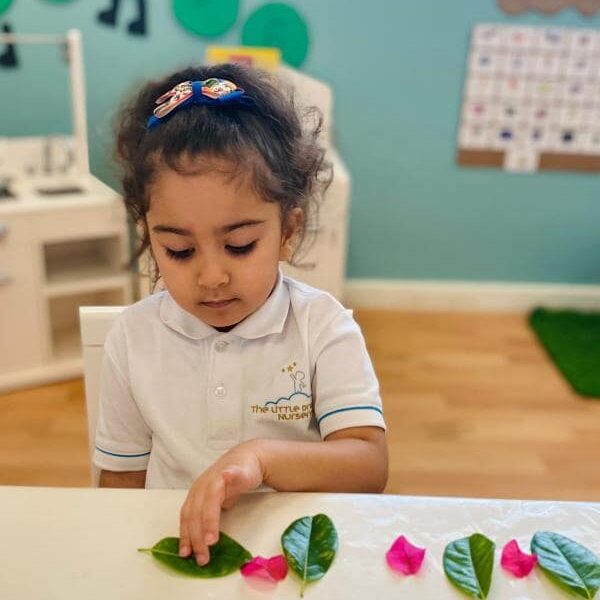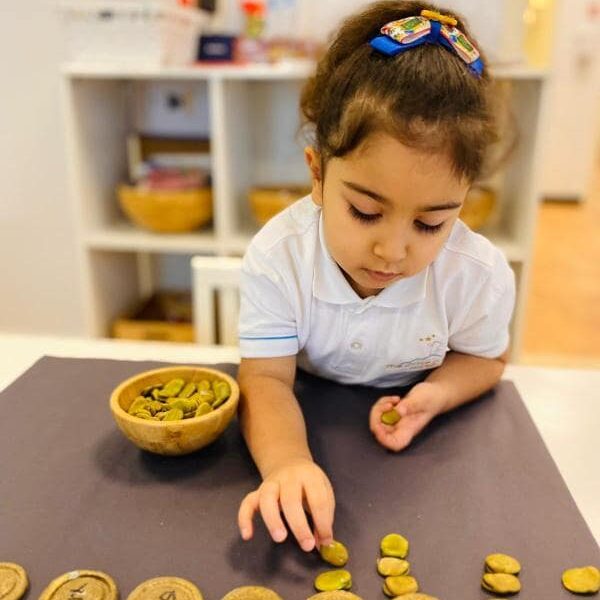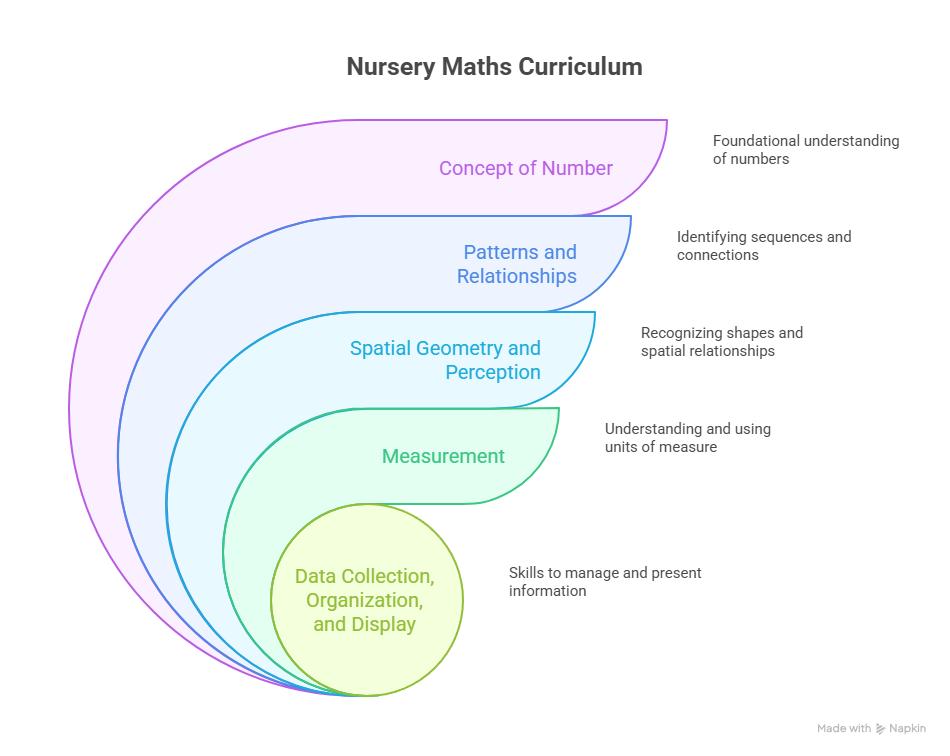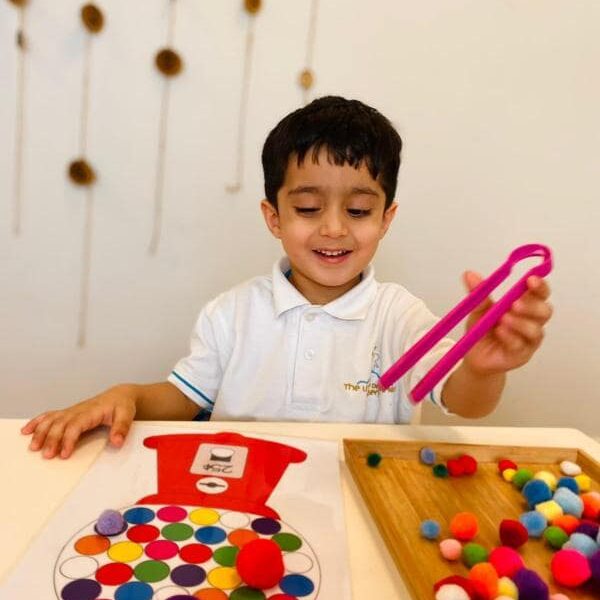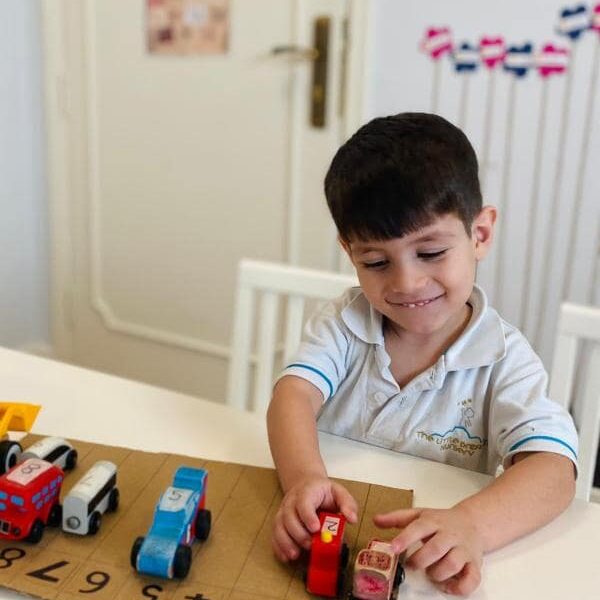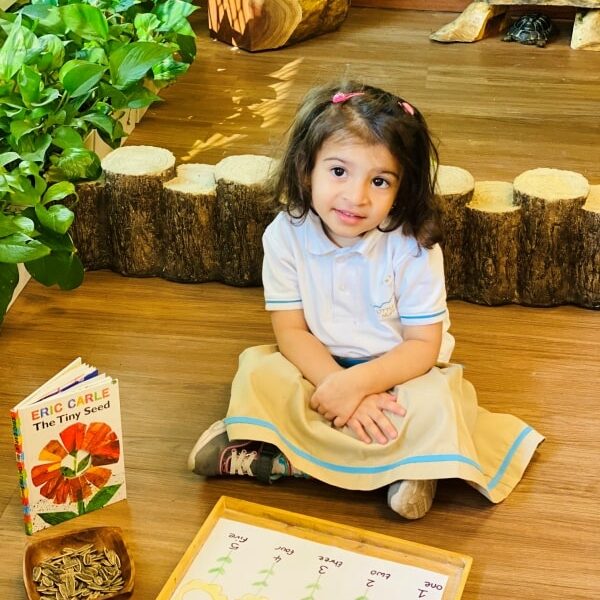How we teach maths to your Little Mathematicians
Our nursery maths curriculum for Little Mathematicians
In general, we teach your child the basics of nursery maths activities in our nursery in Jumeirah. These concepts include the following list.
1) Concept of number;
2) Patterns and relationships;
3) Spatial geometry and perception;
4) Measurement;
5) Data collection, data organisation and data display
EYFS Mathematics Curriculum
We use the EYFS curriculum plan activities that will develop the children’s understanding of numbers, space, shapes, and measures. We support the children to solve real-world mathematical problems with numbers up to 5. In our nursery mathematics planning, we are also comparing sets that allow the child to learn the meaning of words greater than, larger than, smaller than and equal in size.
Little Mathematicians in our nursery in Dubai
Recognising patterns and relationships is a topic in our British nursery in Dubai that is not only used in preschool maths in nursery education, but also in science and literacy for children. The purpose of setting patterns and relationships as a component of preschool math education is to help children recognise, pattern, copy, make, and predict simple patterns.
What do Little Mathematicians learn at the best nursery in Dubai?
Your children first learn to recognize simple geometric shapes such as triangles, circles and squares. In the next step, they learn the properties of these shapes (for example, that a square has four sides). At a higher level, children begin to use reasoning to work with shapes. For example, when looking at a shape they can recognise that it’s a triangle because it has three sides.
Through the experiences, we develop the children’s understanding of mathematics also with helping them to understand positional language. For example:
- Movement (backward, forward, around)
- The position of things (up, out, down, in, back).
- The distance (near, far, next to).
